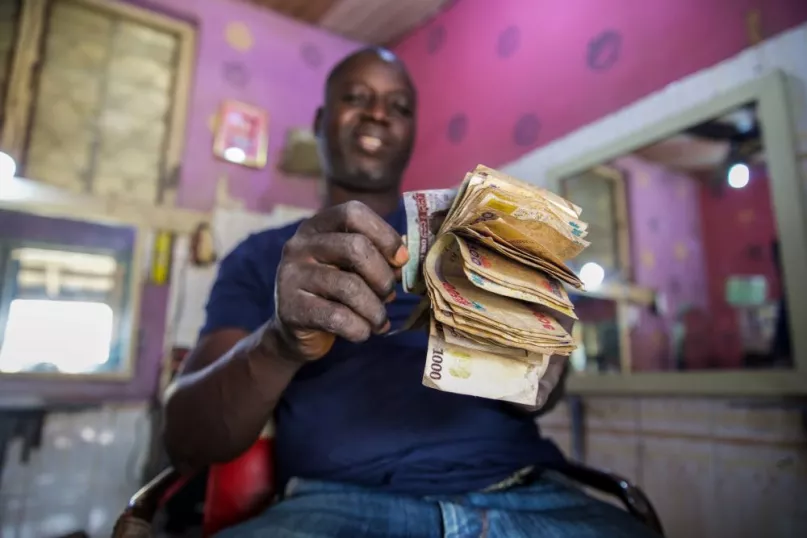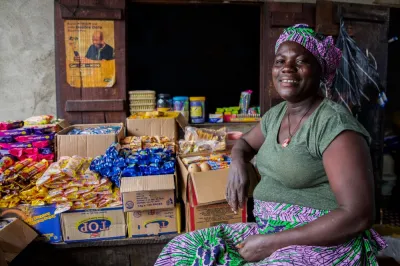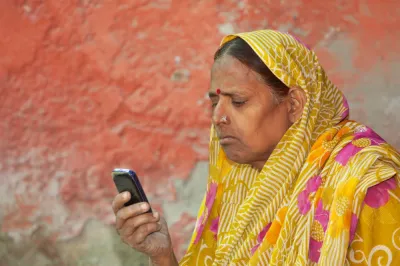Rising Interest Rates, a Strong Dollar and Global Inflation Could Burden MFIs

There is a popular saying that “when America sneezes, the world catches a cold.” This cliché is particularly apt today, with the emerging market microfinance sector likely to suffer amid rising interest rates and a strong dollar. That was the conclusion of Erik Geurts, the Lima-based financial inclusion consultant recently interviewed on the Let’s Talk Microfinance podcast.
According to Geurts, America’s COVID-19-driven economic sickness was overzealously medicated with excessive monetary injections and then aggravated by geopolitically-driven supply chain problems, driving up global inflation, which is forecast to rise to 8.8 percent in 2022 from 4.7 percent in 2021. Further, emerging markets’ inflation will spiral even higher as their citizens demand offsetting salary adjustments and more government subsidies.
The subsequent hike in US interest rates by the Federal Reserve (the United States central bank) has made investments in emerging markets comparatively less attractive for the risk being taken. As investors are lured away from emerging markets and sell their investments in local currency to move into US dollars, money can flow out, causing devaluations.

Sources: Trading Economics - United States Fed Funds Rate and Trading Economics - United States Dollar
Moreover, China’s economic outlook appears precarious, with GDP growing at 3.9 percent in the third quarter of 2022, well below the government’s targeted 5.5 percent for the full year. This hurts demand for raw materials supplied by many emerging markets, especially in Latin America. Finally, the Ukraine war has jacked up the prices of foodstuffs and energy, although these have come off a little of late.

Sources: St. Louis Fed and Trading Economics - Brent crude oil.
For individual emerging markets it’s a mixed bag. Some countries, like Nicaragua, have run responsible fiscal policies which have granted them comparative stability, while others, like Sri Lanka and Lebanon, have “outspent themselves,” undergoing devaluations and extreme crisis.
In certain markets, more expensive external capital has led governments to finance themselves by forcing local banks to buy their debt. Those governments’ now-shaky fiscal positions mean that systemic banks’ capital buffers (i.e. the amount of capital they put aside in case of future potential difficulties) are jeopardized and would be irreparably damaged if their governments defaulted.
What does this mean for microfinance?
For the microfinance sector, the implications of the current macroeconomic situation will vary depending on a country’s regulatory and market characteristics. For countries where microfinance institutions (MFIs) tend to fund themselves externally, like Nicaragua, they may have more difficulty in raising capital as they encounter ever more constrained markets. On the other hand, countries like Sierra Leone, where institutions can raise deposits locally, have more flexibility and access to capital, even if this does not necessarily forestall broader macroeconomic risk.
Similarly, in countries with strict interest rate regulations, MFIs are more limited in the tools they can use to offset greater risk as they are unable to increase interest rate spreads and therefore cannot reprice their loans to compensate for a more challenging environment. However, in countries where such regulations do not exist or are looser, for example Peru and Colombia, MFIs can adjust interest rates to offset more difficult conditions.
Geurts’s advice to regulators is to allow MFIs to collect deposits and to let market participants reprice risk more freely. And for MFIs, Geurts suggests shortening loan tenors to take into account pressure on client cashflows straitened by inflation. For MFIs who rely on external funding, he recommends trying to change their funding models by collecting deposits locally (if permitted in their regulatory context).
Overall, however, MFIs are fortunate in sourcing capital from microfinance investment vehicles (MIVs) and development finance institutions (DFIs) that tend to have a more “social” mission that permits them to endure volatility in the pursuit of more altruistic objectives. And above all, Geurts highlights the microfinance sector’s inherently favorable characteristics. Unlike large commercial or mortgage banks, MFIs tend to make small, short-tenor loans that reprice quickly to reflect a changed risk environment.
In this way, while a strong dollar and rising interest rates are extremely troublesome, they are by no means the kiss of death for a sector with sturdy structural foundations. However, the ability to deal with the consequences of a higher dollar and interest rates depends on combined action of all stakeholders: governments, politicians, regulators, depositors, MIVs and DFIs.


